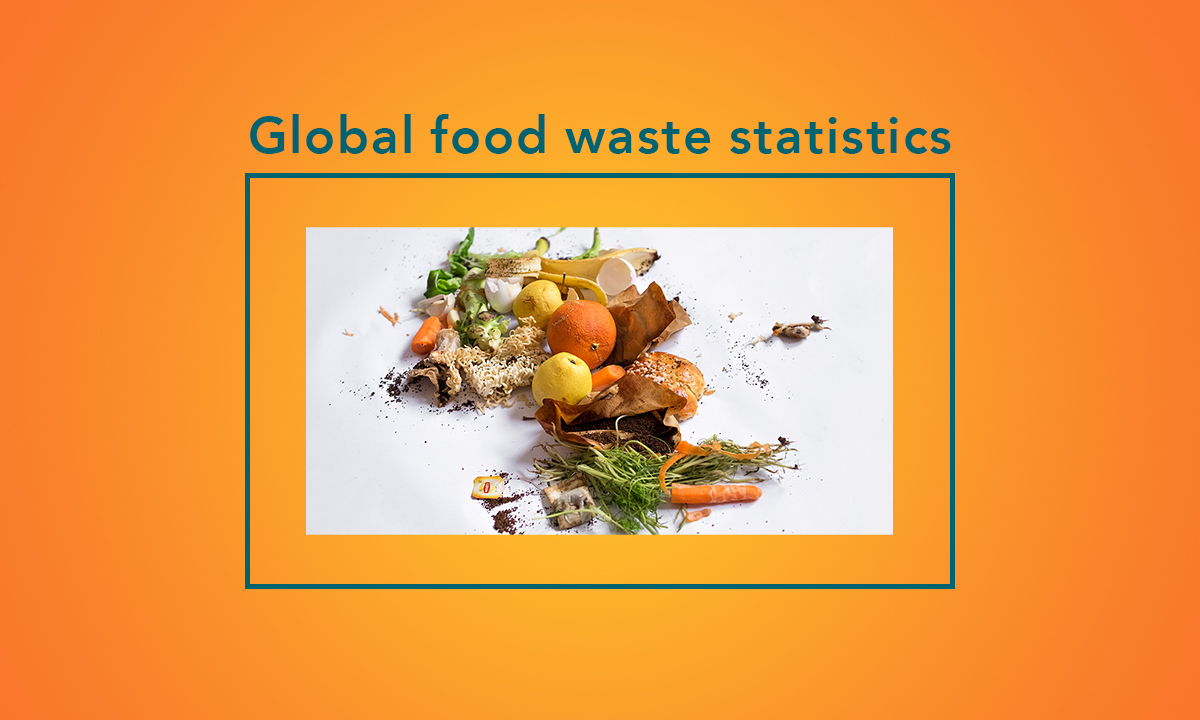Global food waste statistics:
1.3 billion tons of edible food – equivalent to a third of global production – of food wasted annually by the world, which is enough to feed 3 billion people, according to a report by the Food and Agriculture Organization of the United Nations. The value of this wasted amount of food is about 680 billion dollars. A waste in food means a waste of the public and private economy, and not making the best use of food losses to feed the poor means waste in social and human relations that contributes to increasing poverty and hunger.
The Middle East is limited in production for its food needs, and it can provide 50% of its food to its people, and the rest will import it. According to statistics, the Middle East and the Arab countries in North Africa are expected to reach about $ 92.4 billion in 2020.
Key facts on food loss and waste you should know!
Food losses and waste amount to roughly US$ 680 billion in industrialized countries and US$ 310 billion in developing countries.
every year, consumers in rich countries waste almost as much food (222 million tonnes) as the entire net food production of sub-Saharan Africa (230 million tonnes).
The amount of food lost or wasted every year is equivalent to more than half of the world’s annual cereals crop. Food loss and waste also amount to a major squandering of resources, including water, land, energy, labor, and capital and needlessly produce greenhouse gas emissions, contributing to global warming and climate change.
In developing countries, food waste and losses occur mainly at the early stages of the food value chain and can be traced back to financial, managerial and technical constraints in harvesting techniques as well as storage and cooling facilities. In the medium- and high-income countries food is wasted and lost mainly at later stages in the supply chain. Differing from the situation in developing countries, the behavior of consumers plays a huge part in industrialized countries
The expansion of the food and packaging industry can help reduce the amount of food and waste loss
Let’s practice the following tips to reduce food waste in the Middle East:
1:Purchase foodstuffs, especially fruits and vegetables, in small quantities and only according to your needs.
2:Try to use the quantities in an optimal way and eat the rest of them as well
3:Every day you check the food in your fridge/freezer, your fruit basket, and make sure that the rotatable and expired items are expired. Use or donate it before it becomes waste.
We need to follow our ancestors in their method of “buying less and eating leftovers”, which has become old fashioned according to what is known as modern-day customs.
losing food…
On the farm: inadequate harvest time, climatic conditions and practices applied in harvesting and handling, and challenges in marketing the products.
In warehousing: Insufficient warehousing, decisions made early in the supply chain that cause products to have a shorter shelf life.
During transportation: Good infrastructure and efficient trade logistics are key to preventing food loss. Processing and packaging play a role in preserving foods, and losses often occur due to inadequate facilities, technical failure, or human error.
Food waste happens…
In the store: The causes of food waste at the retail level are related to limited shelf life, and the need for food products to meet aesthetic standards in terms of colour, shape, size and diversity in demand.
At home: Consumer waste is often the result of poor purchasing and meal planning, over-purchasing (influenced by excessive portioning and package sizes), confusion about labels (best before use) and poor storage at home.
The United Nations and its agencies in the fight against food loss and waste:
We need to be aware of the importance of the issue of food loss and waste, and strengthen nutrition.
Andorra and San Marino played a major role in proposing the International Day of Food Loss and Waste Awareness. The day provides an opportunity to focus more on the need to reduce waste and how this can contribute to sustainable development.
The Food and Agriculture Organization of the United Nations and the United Nations Environment, the two leading agencies in facilitating the observance of the International Day, are currently measuring progress towards our goals.
Activities Program which aims to raise awareness and stimulate action at the local, regional and international level as well.
Did you know ?
When food loss is reduced near the farm, it is more effective in addressing food insecurity and relieving stress on land and water.
When food waste is reduced within the supply chain and at the consumer level, it is a key factor in reducing greenhouse gas emissions.
Packaging now contributes about 5.4 percent of global food system emissions, more than any other factor in the supply chain including transportation.
The challenge of reducing food loss and waste during the COVID-19 pandemic:
The COVID-19 pandemic continues to wreak havoc globally, generating significant challenges that could lead to risks to food security and nutrition in many countries. Disruptions in supply chains resulting from blockages in transport routes, transport restrictions and quarantine measures are leading to significant increases in food loss and waste, particularly perishable agricultural products such as fruits, vegetables, fish, meat and dairy products.
The emergence of the COVID-19 pandemic has led to a shortage of seasonal migrant agricultural labor and transport workers, who have faced difficulties crossing borders. The closure of much of the hospitality industry and schools has also led to a loss of markets for producers, making the situation even more difficult. At the end of the supply chain, with consumers fearful of buying and hoarding, supermarkets, often major donors to food banks, struggle to keep their shelves full and unable to donate food. However, much of the food that families buy may never be consumed and could end up being discarded as food waste, due to a misunderstanding of date determination and improper storage of these household foodstuffs.
Food waste during the COVID-19 pandemic is all the more worrying, considering that food banks across the developed world are anticipating a significant increase in demand, due to the increasing number of people affected financially by rising unemployment. Food banks face a number of problems ranging from a lack of experienced staff, to an insufficient food supply, as well as locations that are no longer suitable for distributing food packages, due to physical distancing measures.
We need to realize the importance of the issue of food loss and waste now more than ever in order to strengthen and implement our global efforts to solve it. There is no doubt that this new International Day faces many challenges to achieve our goals of “responsible consumption and production”, which will contribute to eradicating hunger and combating climate change.
Waste it for the people and the planet:
The International Food Loss and Waste Awareness Day provides an opportunity to call on both the public sector (national or local authorities) and the private sector (companies and individuals) to take action to prioritize actions and advance innovation to reduce food loss and waste in order to restore and build food systems Better and ready to hold out.
Find out more and find out how you can help us through FAO, the lead agency for this World Day, take action, start doing something. Let’s stop food loss and waste. For people, for planet Earth.
The technical platform for measuring and reducing food loss and waste:
Goal 12 of the Sustainable Development Goals in the 2030 Agenda seeks to “ensure sustainable consumption and production patterns”.Currently, FAO and the United Nations Environment Program (UNEP) are seeking to measure progress towards achieving target 3 of SDG 12 through two separate indicators: the Food Loss Index led by the Food and Agriculture Organization (FAO) and the Food Waste Index, led by the United Nations Environment Program (UNEP).
In May 2015, under the presidency of Turkey, the G20 Agriculture Ministers highlighted the scale of food loss and waste as a “global problem of enormous economic, environmental and societal dimension” and encouraged all G20 members to strengthen their collaborative efforts to prevent Loss and waste of food and reduce them. In the context of policy coherence, the DWG was encouraged to continue its efforts towards achieving concrete actions under its implementation plan for the Framework for Food Security and Nutrition. The G20 Recommendation on Food Loss and Waste Reduction was followed by an agreement to establish a technical platform for the measurement and reduction of food loss and waste, which is a common FAO platform.
and the International Food Policy Research Institute. This technical platform, which was launched in December 2015, included the exchange of information and in-depth discussions. It builds on and complements existing FAO initiatives and the CGIAR System Program on Policies, Institutions and Markets and includes an initiative to measure and reduce food loss and waste
To see an article on what is the safest plastic to use with food, click on the following link:
https://cubii.co/en/what-is-the-safest-plastic-to-be-used-with-food/
To view the automatic bottle filling and sealing machine, click the following link:





